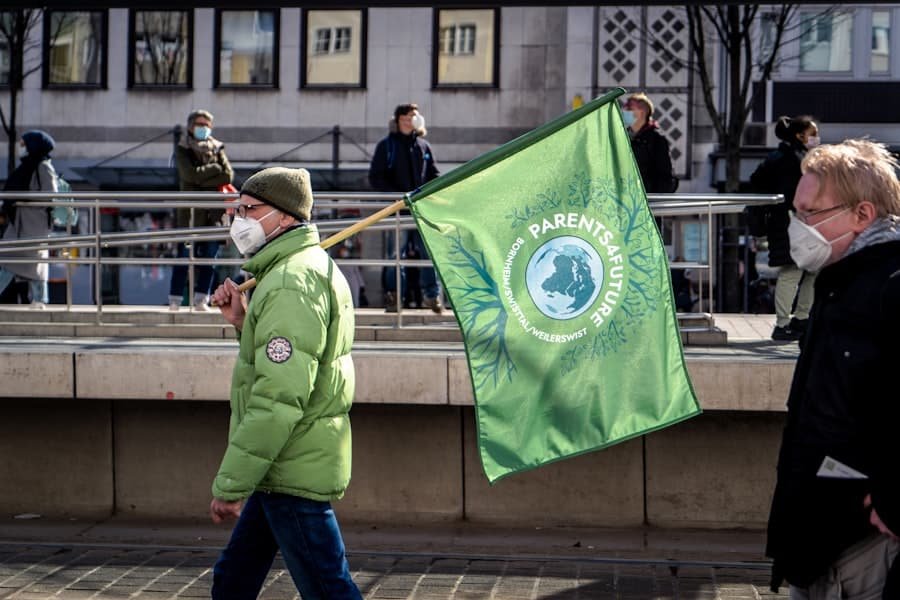The concept of a green supply chain has emerged as a pivotal aspect of modern business practices, driven by the increasing awareness of environmental issues and the need for sustainable development. A green supply chain integrates environmentally friendly practices into the traditional supply chain management framework, focusing on reducing waste, minimising carbon footprints, and promoting the efficient use of resources. This approach not only addresses ecological concerns but also aligns with the growing consumer demand for sustainable products and practices.
As businesses strive to enhance their corporate social responsibility (CSR) profiles, the adoption of green supply chain principles has become a strategic imperative. The evolution of the green supply chain can be traced back to the late 20th century when environmental regulations began to tighten and consumers started to favour companies that demonstrated a commitment to sustainability. Today, organisations across various sectors are recognising that a green supply chain is not merely a compliance issue but a competitive advantage.
By rethinking their supply chain processes, companies can achieve operational efficiencies, reduce costs, and enhance their brand reputation. The integration of sustainability into supply chain management is no longer optional; it is essential for long-term viability in an increasingly eco-conscious marketplace.
Summary
- Green supply chain management focuses on reducing the environmental impact of the supply chain process.
- Implementing a green supply chain can lead to cost savings, improved brand reputation, and reduced carbon emissions.
- Strategies for creating a green supply chain include sourcing from sustainable suppliers, reducing waste, and using eco-friendly packaging.
- Key components of a green supply chain include sustainable sourcing, energy efficiency, and waste reduction.
- Challenges in implementing a green supply chain include resistance to change, lack of awareness, and higher initial costs.
Benefits of Implementing a Green Supply Chain
Implementing a green supply chain offers numerous benefits that extend beyond mere compliance with environmental regulations. One of the most significant advantages is cost reduction. By optimising resource use and minimising waste, companies can lower their operational costs.
For instance, energy-efficient practices in manufacturing and logistics can lead to substantial savings on utility bills. Additionally, reducing material waste not only cuts costs associated with disposal but also decreases the need for raw materials, which can be particularly beneficial in times of fluctuating commodity prices. Another critical benefit is the enhancement of brand reputation and customer loyalty.
As consumers become more environmentally conscious, they are increasingly inclined to support brands that demonstrate a commitment to sustainability. Companies that adopt green supply chain practices can differentiate themselves in the marketplace, attracting a loyal customer base that values ethical consumption. Furthermore, positive public perception can lead to increased sales and market share, as consumers are often willing to pay a premium for products that are produced sustainably.
This shift in consumer behaviour underscores the importance of integrating sustainability into core business strategies.
Strategies for Creating a Green Supply Chain

Creating a green supply chain requires a multifaceted approach that encompasses various strategies tailored to an organisation’s specific needs and capabilities. One effective strategy is the adoption of sustainable sourcing practices. This involves selecting suppliers who prioritise environmental responsibility and adhere to sustainable practices in their operations.
By collaborating with eco-friendly suppliers, companies can ensure that their entire supply chain aligns with green principles, from raw material extraction to final product delivery. Another crucial strategy is the implementation of waste reduction initiatives throughout the supply chain. This can be achieved through techniques such as lean manufacturing, which focuses on minimising waste while maximising productivity.
Companies can also explore recycling and reusing materials wherever possible, thereby reducing their overall environmental impact. Additionally, investing in technology that enhances supply chain visibility can facilitate better decision-making regarding resource allocation and waste management. By leveraging data analytics and real-time monitoring systems, organisations can identify inefficiencies and implement corrective measures promptly.
Key Components of a Green Supply Chain
A successful green supply chain comprises several key components that work synergistically to promote sustainability. One fundamental element is eco-design, which involves designing products with their entire lifecycle in mind. This includes considering the environmental impact of materials used, energy consumption during production, and end-of-life disposal options.
By prioritising eco-design, companies can create products that are not only functional but also environmentally friendly. Another essential component is sustainable logistics. This encompasses the transportation and distribution aspects of the supply chain, where companies can implement strategies such as optimising delivery routes to reduce fuel consumption and emissions.
The use of alternative fuels and electric vehicles in logistics operations further contributes to minimising the carbon footprint associated with transportation. Additionally, adopting practices such as consolidating shipments and utilising intermodal transport can enhance efficiency while reducing environmental impact.
Challenges and Obstacles in Implementing a Green Supply Chain
Despite the numerous benefits associated with green supply chains, organisations often encounter significant challenges when attempting to implement sustainable practices. One major obstacle is the initial investment required for transitioning to greener operations. Upgrading technology, training employees, and establishing new processes can entail substantial costs that may deter some companies from pursuing sustainability initiatives.
Moreover, the return on investment may not be immediately apparent, leading to reluctance among stakeholders who prioritise short-term financial performance. Another challenge lies in the complexity of managing a green supply chain across multiple tiers of suppliers. Ensuring that all suppliers adhere to sustainable practices can be difficult, particularly when dealing with global supply chains where regulations and standards may vary significantly.
Companies must invest time and resources into auditing suppliers and fostering collaboration to ensure compliance with environmental standards. Additionally, resistance to change within an organisation can hinder progress; employees may be accustomed to traditional practices and may require motivation and education to embrace new sustainable approaches.
Case Studies of Successful Green Supply Chain Implementation

Several companies have successfully implemented green supply chain practices, serving as exemplary models for others seeking to enhance their sustainability efforts. One notable case is that of Unilever, which has made significant strides in integrating sustainability into its supply chain operations. The company has committed to sourcing 100% of its agricultural raw materials sustainably by 2025.
Unilever’s Sustainable Living Plan focuses on reducing its environmental footprint while increasing its positive social impact through initiatives such as responsible sourcing and waste reduction. Another compelling example is IKEA, which has adopted a comprehensive approach to sustainability within its supply chain. The company has invested heavily in renewable energy sources for its operations and aims to become climate positive by 2030.
IKEA’s commitment extends beyond its own operations; it collaborates with suppliers to ensure sustainable sourcing of materials like wood and cotton. The company’s circular economy initiatives also promote recycling and reusing materials, demonstrating how a green supply chain can drive innovation while addressing environmental challenges.
Future Trends in Green Supply Chain Management
As awareness of environmental issues continues to grow, several trends are emerging in green supply chain management that will shape its future landscape. One prominent trend is the increasing use of technology to enhance sustainability efforts. Innovations such as blockchain technology are being explored for their potential to improve transparency and traceability within supply chains.
By providing real-time data on product origins and environmental impacts, blockchain can help companies make informed decisions about sourcing and logistics. Additionally, there is a growing emphasis on circular economy principles within supply chains. This approach seeks to minimise waste by designing products for longevity, repairability, and recyclability.
Companies are beginning to recognise the value of creating closed-loop systems where materials are continuously reused rather than discarded after a single use. This shift not only reduces environmental impact but also opens up new business opportunities in areas such as remanufacturing and refurbishment.
The Importance of Embracing a Green Supply Chain
The importance of embracing a green supply chain cannot be overstated in today’s business environment. As organisations face mounting pressure from consumers, regulators, and stakeholders to adopt sustainable practices, integrating environmental considerations into supply chain management has become essential for long-term success. The benefits of implementing a green supply chain extend beyond compliance; they encompass cost savings, enhanced brand reputation, and increased customer loyalty.
Moreover, as demonstrated by successful case studies and emerging trends, companies that prioritise sustainability are better positioned to navigate future challenges while contributing positively to society and the environment. By adopting innovative strategies and fostering collaboration across their supply chains, organisations can not only mitigate their ecological impact but also drive economic growth in an increasingly competitive marketplace. Embracing a green supply chain is not merely an option; it is a vital step towards ensuring a sustainable future for businesses and the planet alike.
A key aspect of implementing a Green Supply Chain is ensuring workplace safety in logistics. According to a recent article on Ways to Improve Workplace Safety in Logistics, companies must prioritise the safety of their employees to create a sustainable and efficient supply chain. By implementing safety measures and training programmes, businesses can not only reduce accidents and injuries but also improve overall productivity and reputation. This article highlights the importance of workplace safety in the logistics industry and its impact on creating a greener and more sustainable supply chain.
